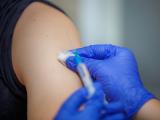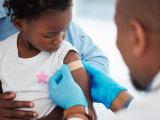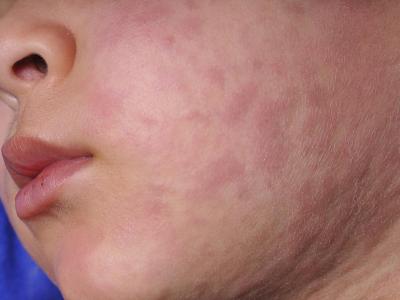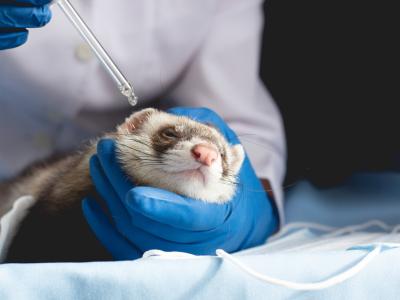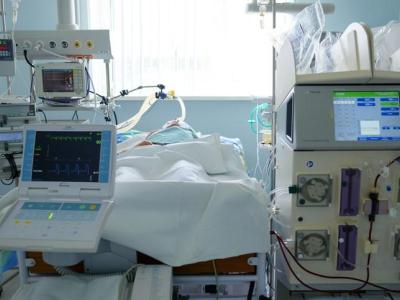May 21, 2010 (CIDRAP News) – Global production of the H1N1 influenza vaccine has made clear that the world still has a long way to go to meet pandemic production capacity goals set by the World Health Organization (WHO) 4 years ago, WHO experts said in a report released this week.
In 2006 the WHO set a goal of having enough vaccine for 2 billion people within 6 months after a pandemic vaccine strain is supplied to industry. By Dec 1, 2009, which marked the 6-month milestone for the H1N1 pandemic, global production reached just 534 million doses, according to the "in press" report published online May 18 by Vaccine.
The report, based on a survey of all flu vaccine manufacturers, says further, "The forecasted production of pandemic vaccine 12 months after the availability of the vaccine virus (i.e., June 2010) is approximately 1.37 billion doses, which is only 28% of the annual global production capacity of 4.9 billion doses estimated from the WHO survey conducted n May 2009." It was authored by Jeffrey Partridge and Marie Paule Kieny of the WHO H1N1 Influenza Vaccine Task Force.
There are several factors besides limited production capacity that help account for the relatively low output, the report points out. They include:
- Lower-than-expected yields of the egg-based vaccine virus—about two-thirds lower than typical yields for seasonal flu vaccine viruses
- The reluctance of some regulatory authorities to approve vaccines containing dose-sparing adjuvants
- Shrinking vaccine demand resulting from delayed vaccine availability and a pandemic of moderate severity
- The halting of pandemic vaccine production by some manufacturers in late 2009 and by all producers in early 2010 to switch to seasonal vaccine production for the Southern and Northern hemispheres, respectively
The data in the report come from a survey of 33 current or potential flu vaccine manufacturers, conducted by the WHO from December through February. The questionnaire covered seasonal as well as pandemic vaccine production.
The manufactures said they had produced 534 million doses of pandemic vaccine, 96% of which used inactivated viruses (versus live attenuated viruses). Two thirds of the doses contained no adjuvant. (The pandemic vaccines used in the United States contained no adjuvant, unlike those used in Europe.)
The producers predicted they would make a total of 1.303 billion doses of H1N1 vaccine by Mar 1 of this year and 1.367 billion doses by Jun 1.
As for seasonal vaccine production, the manufacturers said they collectively made 500 million doses of trivalent product for the Northern Hemisphere's 2009-10 season. (Previous reports have put the US share of that at about 115 million doses.) They anticipated making 73 million doses for the Southern Hemisphere's 2010 season.
The report also shows that although flu vaccine production remains mostly concentrated in a few developed countries, the group of countries with domestic capacity, along with overall capacity, has grown since the WHO set its goals in 2006.
At that time, most production was concentrated in nine industrialized countries, and global capacity was about 350 million doses of trivalent seasonal vaccine annually. Now, the report says, production "is currently available or is being established in 25 countries, including developing countries as part of the WHO technology transfer program," and capacity for seasonal vaccine production is estimated at 800 million doses.
Of the 25 countries, 9 have recently acquired production capacity or have credible plans to do so, the article says. Production is divided among 34 current and 7 potential future facilities.
Despite the progress made, more than 80% of seasonal flu vaccine doses made in 2009-10 "will have originated from the seven large manufacturers that are located in the USA, Canada, Australia, western Europe, Russia, China, and Japan," the WHO says.
Further, adequate production capacity is still lacking in some regions, especially sub-Saharan Africa and Eastern Europe.
Because wealthy countries had already reserved a large share of expected vaccine supplies before or shortly after the pandemic emerged, the report points out, most developing countries had no H1N1 vaccine before January 2010, more than 6 months after the WHO declared the pandemic.
The report does not list which countries have vaccine factories, but it says that of the 34 existing facilities, 15 are in the WHO's Western Pacific region and 12 are in Europe. Seven manufacturers expect to bring production online in the next 5 years, including 2 in the Americas, 2 in the Eastern Mediterranean, 2 in Southeast Asia, and 1 in the Western Pacific.
The report concludes that progress has been made, but "marked challenged remain to achieve the goal of producing enough vaccine to cover the world's population." It says more must be done to promote seasonal vaccine use and thereby boost production capacity, to build capacity in developing countries, and to develop new vaccines and technologies that will permit rapid vaccine production when a pandemic strain is identified.
Partridge J, Kieny MP. Global production of seasonal and pandemic (H1N1) influenza vaccines in 2009-2010 and comparison with previous estimates and global action plan targets. Vaccine 2010, article in press [Abstract]
See also:
Apr 26 CIDRAP News story "H1N1 lessons learned: Vaccine production foiled, confirmed experts' predictions"
Oct 26, 2007, CIDRAP News story "The pandemic vaccine puzzle, part 2: Vaccine production capacity falls far short"






